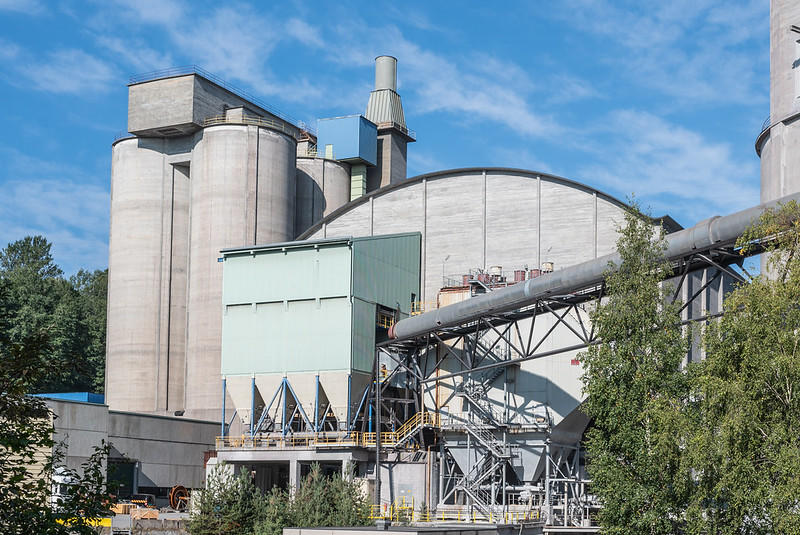There's no denying subsidies' impact on public sentiment; you only need to speak the words 'too big to fail' to incite ire and outrage.
The phrase came into vogue in the wake of the 2008 global economic downturn, when US banks deemed vital to that country's economy could not be allowed to shutter, taking a substantial portion of individual and commercial wealth with them. The government gave banks huge infusions of cash to staunch the immediate crisis, and continues to subsidize them today.
The shockwaves reverberated in the UK, where our politicians echoed US assertions and actions. However, unlike our friends across the pond, our government subsequently took strides to ensure that UK banks could never get that big again.
Why did so many countries' governments believe that subsidizing the institutions that caused the global financial meltdown was the best way to alleviate the crisis? To understand their reasoning, we have to understand how the economy works and subsidies' role in keeping it stable.
| Economic principles |
|---|
| 1. Economies strive for equilibrium |
| 2. When demand outstrips supply, subsidies will encourage production. |
| 3. When supply outstrips demand, subsidies promote consumption. |
| 4. The cost of a subsidy may exceed its gains, creating inefficiency. |
Of course, these four points represent a vast oversimplification of how subsidies work on economies. To fully understand how these grants and concessions influence the economy, we have to closely examine each of its drivers and how they work together.

The Concept of Equilibrium
As any economist could tell you, markets strive for equilibrium; the point where the amount of goods for sale exactly meets the demand for said goods, with no price fluctuation. The price factor is key to establishing this balance. If the goods in question cost exactly what the consumer is willing to pay for them and the goods are sold at a price the seller requires to recoup their costs, the market has achieved equilibrium.
Let's look at a real-world example of these conditions.

When Apple releases a new version of their phone, the price is generally very high, meaning few people will pony up those tremendous wads of cash. However, a few months after the initial release, the price tends to go down, so that the people who were keen to have that new phone would be more likely to buy one.
Markets seldom start at equilibrium; it is achieved through price adjustments over time.
In economic terms, the Apple scenario proves that the price of a good too far above market price will result in an oversupply of that good. Incrementally nudging the price down to what people are willing to pay ensures that the overstock will dwindle, while not slashing too deeply into the seller's bottom line.
This type of equilibrium is further qualified as competitive. Subsidies play a major role in helping to bring about competitive equilibrium - but, sometimes, subsidies result in the state of disequilibrium - when supply exceeds demand.
Some examples of subsidies, such as employment subsidies, work over the long term to balance out the disequilibrium in the jobs market. Generally speaking, disequilibrium is a short-term condition.
Equilibrium is essential to economic stability. However, due to the factors that make up the equilibrium equation - supply, demand, price and excess, achieving that balance is by no means the automatic result of market processes. That's where subsidies come in.
Shifting to the Right
To borrow again from our Apple example: the price of the new phone has fallen and now, there are lines out the door of consumers queueing up to buy. Luckily, the stores have enough of a supply to meet that demand.
However, such a spike in demand results in the supply shrinking, knocking the market out of balance. Now, it's time for a subsidy; its purpose is to shift the supply curve to the right, namely to increase the supply by the amount of the subsidy.
This is an example of the supplier receiving a subsidy they might use to increase production or raise their price again, so that fewer people will buy the phone at the higher price.
Conversely, if the supply is still abundant after price adjustments, consumers might be encouraged to buy the phone through rebates. Note that rebates are not usually subsidies, except in cases like transportation or rent rebates, also known as housing subsidies.

Our phone scenario is an example of consumer subsidy; others include utility subsidies, food subsidies and transportation subsidies. Such grants make living costs more manageable for the economically disadvantaged but, admittedly, the lion's share of subsidies go to producers rather than consumers.
- Production subsidies are designed to increase the output of a certain supply of goods
- Export subsidies help producers cover the costs of shipping their goods to other consumer markets
- Import subsidies reduce the price of goods merchants bring in, giving consumers a broader choice of goods to buy
- Tax subsidies are given to corporations to offset some of their operating costs
- Employment subsidies are paid to companies to encourage job creation as a way to reduce unemployment
- Transport subsidies help reduce pollution and congestion on city streets
- Energy subsidies keep consumer prices for gas, oil and electricity below market levels
Subsidies may be broad or narrow. Logically, narrow subsidies are targeted to a specific need; farmer subsidies are a good example of such. Broad subsidies are harder to identify and track. They may be grants of money or non-monetary, such as tax breaks given to a producer.
Furthermore, subsidies may be classified as legal or illegal, ethical or unethical.
Considering the ever-worsening climate catastrophes. energy subsidies that encourage more drilling of oil wells and more coal mining are currently trending toward the unethical. Likewise, small airports that service low-cost carriers are often seen as benefiting from illegal subsidies.
All of this is valuable information but it doesn't fully explain what subsidies are.
The Irony of Subsidies
Historically and still today, many governments tout the market's 'invisible hand', a concept first expounded on by the Father of Modern Economics, Adam Smith.
In essence, the theory states that all individuals engaged in economic activity will act in their best self-interest, with no intervention needed or called for. Indeed, it goes so far as to postulate that a regulated economy will not enjoy as bountiful a yield as one that automatically 'resets' itself to the best economic interests of the parties involved.
The proof is self-evident. Witness any merchant selling someone at too high a price and they'll be stuck with their stock. Consumers' best interest lies in not paying an exorbitant price and merchants' best interest lies in selling their goods - not in generating huge profits, as many seem to believe. Thus, the merchant will be compelled to lower their price; a prime example of the market's invisible hand at work.
For further studies find past papers economics A levels here on Superprof.

So, why do governments constantly nudge the market with their subsidies?
Time, for one. Economic conditions don't have the luxury of time; prolonged disequilibrium can have devastating real-world effects. Let's look at the subsidies farmers receive to better understand.
To the uninitiated, farmers plant their crops and/or grow their livestock, and then sell it. Whatever they earn is their income... but that yearly or seasonal windfall is hardly adequate compensation for everything that farmers do. And, when taken down to the brass tacks, that money doesn't equal a living wage, and it's certainly not enough to cover the expenses of a working farm.
Farmers need money throughout the year, just like the rest of us. They and their enterprises cannot afford to wait until the next big payday, nor can they afford the shortfalls a bad season or low market price could bring. And the public can't afford to go without food, so farm subsidies bridge that gap.
Housing subsidies are another example of real-world need. People can't wait to have enough money to afford a place to live so the government steps in to make housing more affordable to the economically disadvantaged.
Stability is another factor that drives the need for subsidies.
Let's say a manufacturing company has discovered that it can lower its production costs by relocating their plant to another country. Such a move would cause a huge spike in unemployment and a sizable loss of economic activity in the region. So, the government might offer to lower the firm's taxes or subsidize their cost of transporting the goods as an incentive to keep the factory operating as it is.
Clearly, these interventions are contrary to the 'invisible hand' theory but they are vital to economic stability. There's no question of why governments pay subsidies, but why they tout the theory.
It comes down to self-interest.
Producers and consumers aren't the only parties with economic interests; governments have an interest in sustaining the economy for a variety of reasons: to ensure stability and growth, to encourage innovation and to keep social unrest to a minimum, among them.
As with all things economic, balance is the key. Sometimes, subsidies are too weighty to lend the economy the equilibrium it seeks while, in other instances, overcorrection through subsidies can lead to severe downstream consequences - the US bank bailout out is a prime example of such.
Perhaps the best use of subsidies to create and maintain a stable economy is to move past subsidizing; to find alternatives to subsidies that will lessen regulatory impact on the economy.
















